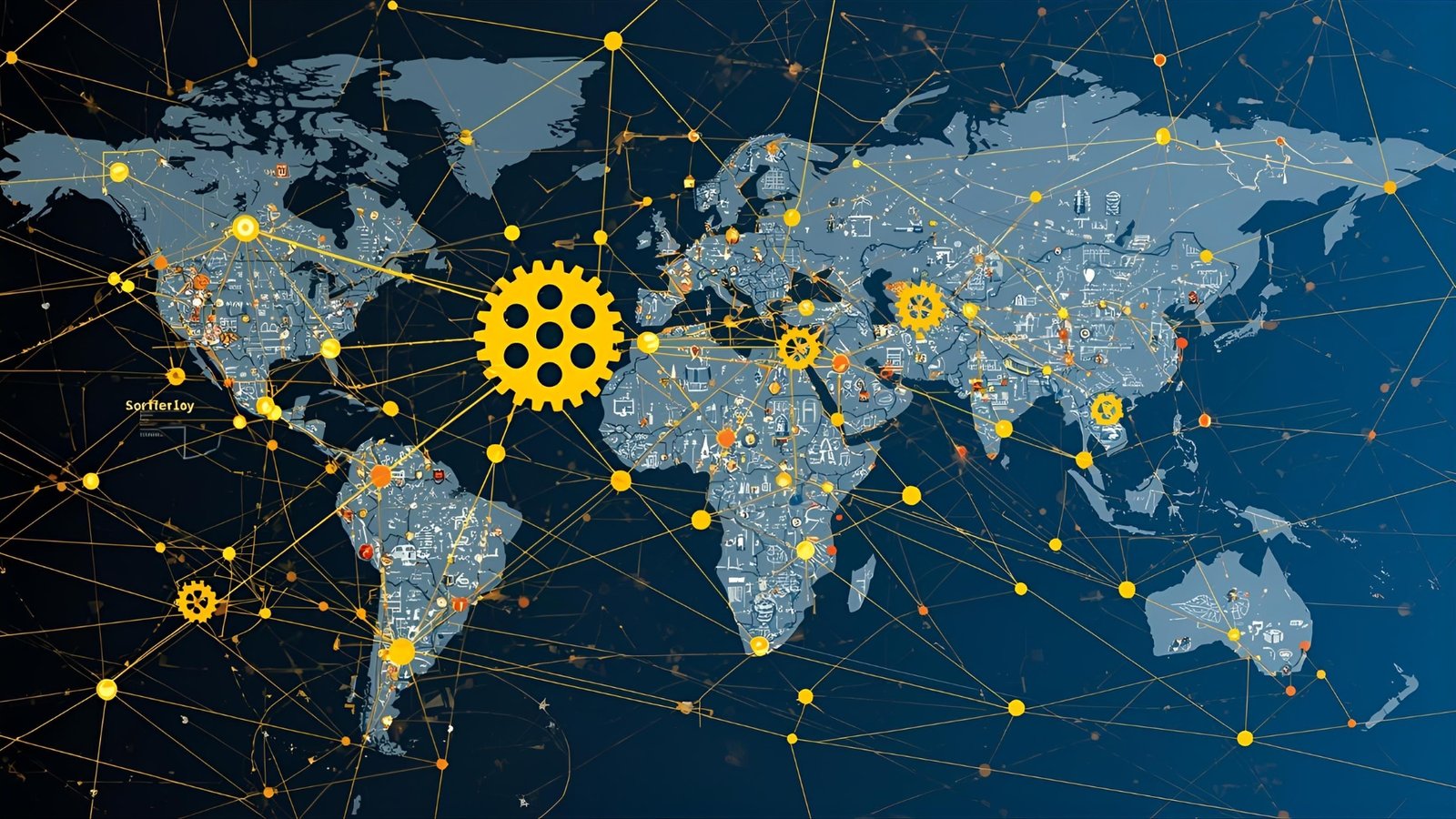China’s rare earth export controls tighten global tech grip
China expands export controls on rare earths and tech, reshaping supply chains for EVs, semiconductors, and defense. What the new rules mean—and who’s at risk.

China’s latest move to tighten export controls on rare earth elements and associated technology marks a decisive turn in the global race for critical minerals. By widening licensing requirements, limiting foreign military end-use, China’s rare earths, and extending restrictions to the processing know-how that converts mined ores into high-performance NdFeB magnets and materials, Beijing is signaling that control over inputs to modern industry—from electric vehicles (EVs) to semiconductors and advanced defense systems—is now a pillar of its national strategy.
Multiple announcements in 2023–2025 laid the groundwork (gallium, germanium, and graphite), but the newest round concentrates on leveraging the rare earths ecosystem itself, including magnet manufacturing and recycling equipment, and China’s rare earths. China already dominates this value chain; most of the world’s rare earth processing and magnet production occurs there, and several recent policy documents formalize how export permissions can be granted—or withheld—on national security grounds.
This article examines the changes that have occurred, their significance, and how companies across the automotive, wind power, consumer electronics, and aerospace sectors should respond. China’s rare earths. China’s rare earths: It explains the new licensing regime, details the global dependencies that magnify its impact, and maps realistic mitigation paths—from supplier diversification to materials substitution and recycling. The goal is to provide executives, procurement leads, and policy watchers with a clear and practical guide to navigating a more controlled and politicized critical minerals market.
What exactly did China change?
Tighter licensing on rare earths, magnets, and tech transfer
In 2023, China began restricting exports of gallium and germanium, and later imposed licensing requirements on high-grade graphite, establishing a broader framework for the outbound control of materials with dual-use potential. China’s rare earths. Those steps matured into 2025 actions that concentrate on rare earths themselves—covering selected elements, magnets, and related processing technologies—and sharpen end-use scrutiny, particularly around defense and semiconductor applications. Analysts note Beijing’s emphasis on preventing military use of Chinese-origin inputs and tightening oversight of foreign companies seeking to export products that embed Chinese rare earths or rely on Chinese processing know-how.
A central theme is process control. It’s not only the ore or oxide that may require a license; it’s also the equipment, software, and technical collaboration that enable efficient separation, alloying, and magnetization. China’s rare earths: Several reports compare the extraterritorial logic to the U.S. foreign direct product rule, in that Chinese content or technology used upstream can trigger downstream export obligations. For multinationals with globally distributed factories, this vastly expands compliance scope and elevates legal risk.
Seven rare earths and the magnet chokepoint
Expert commentary highlights that new limitations in 2025 captured multiple rare earths critical to high-temperature magnets and advanced optics—an escalation with direct implications for EV traction motors, wind-turbine generators, radar, and precision guidance. China’s rare earths: The policy focus on magnet manufacturing is strategic: magnets are the value-added heart of the chain, and substitutions (e.g., induction motors) typically impose efficiency or weight penalties.
Why enforcement matters more than headlines
Past waves of restrictions on gallium and germanium prompted fears of immediate shortages; later, trade data suggested that U.S. import shares did not collapse as dramatically as expected. China’s rare earths. The lesson for 2025: licensing cadence, carve-outs, and case-by-case approvals will decide real-world tightness, not just the rules on paper. However, the additional focus on magnets—and the breadth of technology transfer controls—means compliance burdens and planning uncertainty are structurally higher than in 2023–2024.
Why this matters: China’s structural advantage

Dominance across mining, processing, and magnets
Even before the latest policy shift, China controlled a disproportionate share of the rare earths supply chain. Public estimates frequently cite roughly 70% of global mining, ~90% of processing, and a commanding lead in magnet manufacturing, making it the system’s price setter and supply stabilizer. China’s rare earths: Concentration is most acute in heavy rare earths—notably dysprosium and terbium—which are essential for magnets that require high-temperature performance. Tightening controls from such a dominant supplier amplifies the risk to downstream sectors globally.
Exposure for EVs, wind, chips, and defense
-
Electric vehicles and wind power: Neodymium-iron-boron (NdFeB) magnets power the most efficient traction motors and direct-drive wind turbines. Dysprosium and terbium enable operation at higher temperatures with lower demagnetization risk. Restrictions on those elements or on magnet exports can ripple directly into EV production schedules and turbine projects.
-
Semiconductors and advanced electronics: Rare earths appear in polishing compounds, lasers, lithography subsystems, and specialty alloys; plus, the 2023 template on gallium/germanium showed how non-REE critical minerals can be brought inside the policy perimeter.
-
Defense systems, including precision guidance, sonar, actuators, and radar, rely on high-coercivity magnets. Controls that target foreign military end-use align with Beijing’s national-security framing and raise the likelihood of denials for defense buyers.
The policy logic: national security, reciprocity, and leverage
The national-security rationale
Chinese authorities justify the controls as necessary to prevent foreign militaries from leveraging Chinese resources and to guard core intellectual property in mining, separation, and magnetization. Positioning rare earths alongside gallium, germanium, and graphite also harmonizes the narrative: these are strategic inputs to sectors where technology leadership is contested.
Reciprocal pressure amid techno-economic rivalry

For years, the United States and its allies have deployed their own export controls to slow China’s climb in advanced chips and tools. China’s rare earths. China’s tightening is best read as a reciprocal instrument—employed not to starve global markets outright but to create selective pressure points that can be dialed up or eased as negotiations and geopolitical needs evolve. This playbook increasingly reaches beyond rare earths to a broader spectrum of critical materials and advanced technologies.
What changes for businesses right now?
Compliance is now a board-level risk.
Companies that previously treated rare earths as a generic bill-of-materials line item must elevate export-control compliance to a strategic function. If you source oxides, alloys, magnets, or even equipment and technical services from China—or if Chinese-origin content appears in your suppliers’ inputs—your finished products may require approvals for specific destinations or end uses. Expect more documentation, longer lead times for licenses, and higher costs tied to audit trails.
Lead-time variability becomes the new bottleneck.
Even when licenses are obtained, the timing of approval injects variability into production planning. Procurement teams should plan for buffer stock, dual sourcing, and flexible scheduling to ensure continuity of supply. China’s rare earths. The lesson from 2023: simple headline bans didn’t always choke supply; instead, firms dealt with sporadic delays and a heavier administrative burden. The 2025 layer—especially around magnets and tech transfer—is likely to deepen that pattern.
Pricing power shifts upstream: China’s rare earths.
Tighter controls provide pricing power to approved producers and traders who can navigate licensing efficiently. Sudden dislocations—such as a spate of denials for defense-linked use—could spike prices for dysprosium, terbium, and neodymium—China’s rare earths. Portfolio exposure should be measured not only in raw-material budgets but in the replacement cost of lost production, especially for EV programs and wind projects with contractual delivery milestones.
How governments are responding
Diversification: from mines to magnets
Western strategies are increasingly shifting beyond green-lighting new mines to focus on rebuilding midstream capacity, including separation facilities, metal/alloy plants, and magnet factories. China’s rare earths. Analysts argue that closing the processing and magnet gap is more urgent than new ore supplies. Several industrial policies and defense procurement frameworks now explicitly fund mine-to-magnet buildouts and recycling. China’s rare earths: However, many capabilities remain at an early scale, and achieving commercial competitiveness will take years.
Sanctions, screening, and friend-shoring
In parallel, the U.S. and allied economies are tightening investment screening and exploring friend-shored deals with producers in Australia, Canada, Japan, and the EU. China’s rare earths: The goal is entropy: to reduce single-point-of-failure risk by spreading capacity across multiple jurisdictions and by building transparent, traceable supply chains that can pass compliance audits. Policy research groups caution, however, that reconstructing such networks is costly and time-consuming.
Strategic playbook for companies
Map exposure beyond first-tier suppliers
Start with a granular bill of materials and process map for any product that utilizes NdFeB magnets, phosphors, polishing compounds, or specialty alloys. China’s rare earths: Trace the country of origin for oxides and metals, the location of separation and magnetization, and the use of Chinese technology or equipment. Even trace Chinese content could trigger licensing requirements for specific destinations under the new rules.
Build a dual-track supply system: China-compliant and China-independent.
Where feasible, construct two validated supply paths: one that complies with China’s export license conditions for approved destinations and another that relies on non-Chinese sources for sensitive end uses. China’s rare earths. That may mean partnering with Japanese, European, Australian, or North American magnetizers and alloyers—even if near-term unit costs are higher. The premium buys schedule certainty and mitigates regulatory surprises.
Engineer for material flexibility: China’s rare earths.
R&D can reduce exposure by designing motors and subsystems that can switch between heavy-REE-rich and heavy-REE-lean grades, or even between permanent-magnet and induction architectures, depending on availability. China’s rare earths: Some OEMs offer variant motors for different trims or markets to diversify risk. While efficiency penalties exist, they may be tolerable for specific models or applications.
Invest in recycling and circular flows.
Magnet recycling—including the recovery of neodymium, praseodymium, dysprosium, and terbium from scrapped motors and hard drives—can create a secondary supply with lower geopolitical risk and a smaller carbon footprint. China’s rules also pay close attention to recycling equipment and technology; Western facilities built now should anticipate documentation demands proving the non-Chinese origin of the technology or its proper licensing.
Treat compliance like cybersecurity.
Stand up an internal export-controls program with clear ownership, training, and auditability. Maintain end-use statements, screen counterparties, and document licensing chains for components and subcomponents. China’s rare earths: The more you can prove traceability—including where and how a magnet was made—the easier it becomes to navigate both Chinese and Western rules.
Market Scenarios: What Could Happen Next?
Baseline: tight but workable
In a baseline where licensing proceeds but focuses on defense and specific semiconductor end uses, civilian supply chains continue with higher costs and increased paperwork. China’s rare earths: Companies adapt through dual sourcing, longer lead times, and selective redesigns. Price volatility persists, especially for heavy REEs, but outright shortages are episodic.
Upside: détente or carve-outs
Trade-off diplomacy could deliver sector-specific carve-outs (for example, renewables) or fast-track approvals for large civilian OEMs with robust compliance systems. That would tamp down volatility, though firms should not plan to rely on political timing.
Downside: end-use denials and magnet squeeze
A sharper geopolitical turn—new sanctions, military crises, or tariff escalations—could prompt China to deny licenses for a wider range of end-uses, particularly those linked to allied defense systems. Because magnets are the bottleneck, any clampdown here would have immediate industrial effects, with auto and wind programs forced into production cuts or redesigns.
The broader context: controls beget controls
The world is converging on a policy reality where materials, machines, and know-how are tangled in reciprocal controls. Western restrictions on semiconductor equipment and AI chips prompt China to fortify its control over minerals and magnet chokepoints; Chinese controls in turn justify broader friend-shoring and stockpiling abroad. China’s rare earths: Think of it as a feedback loop where private procurement strategies and public industrial policies must now co-evolve. Companies that thrive will not only optimize costs but also manage regulatory optionality—the ability to pivot among suppliers, jurisdictions, and product architectures as rules change.
What you should do this quarter
Audit, redesign, contract
-
Audit: Develop a comprehensive exposure map for rare earths, magnets, and controlled technology, encompassing all equipment used by your suppliers and suppliers’ suppliers.
-
Redesign: Where feasible, validate heavy-REE-lean magnet grades or alternate motor options for specific models.
-
Contract: Lock in supply with producers that have proven licensing throughput and maintain contingency arrangements with non-Chinese magnetizers.
Communicate with investors and customers.
Explain how the company is handling export controls, what buffers exist, and where capital expenditure will reduce risk (recycling lines, qualification of new vendors)—China’s rare earths. Transparency mitigates the reputational impact of future disruptions and signals operational maturity in a volatile policy environment.
Conclusion
China’s decision to impose stricter controls on the exports of rare earths and technology formalizes a power it has long held in practice: the ability to shape global industrial outcomes by governing access to critical minerals, magnets, and processing expertise. While the immediate impact will depend on licensing rhythms, the strategic message is clear: rare earths are now a fully politicized input, treated on par with advanced semiconductors as a lever of state power.
For businesses, survival means going beyond spot-buy tactics to build structural resilience—dual sourcing, design flexibility, recycling, and compliance systems that can withstand shifting rules. For policymakers, the task is to close midstream gaps and encourage mine-to-magnet ecosystems outside China. China rare earths: The companies that invest today in traceability, technology alternatives, and geographic optionality will be best positioned to grow—even as the ground under the critical minerals market continues to move.
FAQs
Q: What are rare earth elements, and why are they strategic?
Rare earths are a group of 17 elements (including neodymium, praseodymium, dysprosium, and terbium) used in high-performance magnets, lasers, catalysts, and optics. Their strategic value stems less from their rarity in the Earth’s crust and more from the difficulty of separation, purification, and alloying, as well as China’s dominant role in these stages. Controls targeting these steps can shift costs and timelines across EVs, wind, electronics, and defense.
Q: What changed in China’s 2025 actions versus 2023–2024?
Earlier measures focused on gallium, germanium, and graphite—critical but not rare earths. The 2025 focus expands to selected rare earth elements, magnets, and the technology (including equipment, software, and collaboration) that enables processing and magnetization. It also intensifies end-use screening, especially for defense and high-end electronics.
Q: Will these controls cause immediate shortages?
Not necessarily. Following the 2023 controls, U.S. import data indicated limited immediate disruption; however, firms experienced licensing delays and administrative friction. The magnet emphasis in 2025 raises the stakes—especially if approvals are denied for specific end-uses—but outcomes will hinge on enforcement and carve-outs.
Q: Which sectors face the most risk?
EVs, wind turbines, defense systems, and parts of semiconductor manufacturing are most exposed due to their reliance on NdFeB magnets and specialty materials. The vulnerability is highest where heavy rare earths (such as dysprosium and terbium) are required for high-temperature performance.
Q: What practical steps can companies take now?
Map supply chains beyond first-tier vendors, establish dual sourcing (China-compliant and non-Chinese options), engineer material flexibility, invest in recycling, and stand up a robust export-controls compliance program with traceability and end-use documentation. These moves reduce schedule risk and provide options as rules evolve.
See More: Technology and Society Shaping the Future Together
